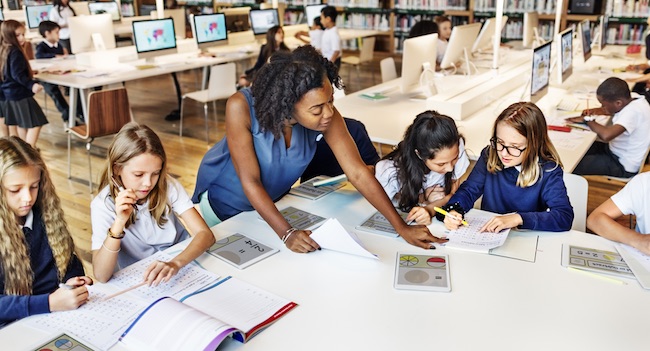- Welcome
- Blended Learning
Blended Learning
Blended learning - this is not only our future but already widely used in 21st century education! When have you last heard from students that learning is fun? Using technology in classrooms more might just be the trick you need to consider!

When learners are interested and engaged, they will excel and enjoy their learning experience. Today’s children are technology savvy and often much more knowledgeable about web-based technologies, computer games and internet use than their parents and teachers, but this needs to change not to loose this generation. Schools must embrace technology in the classroom and this is where blended learning needs to come in to improve learning outcome and to counteract underperformance which is increasingly noticeable in the traditional learning environment. This calls for alternative and innovative teaching and learning strategies and one of them is blended learning.
What is blended learning?
In short, this is a mix of traditional classroom learning blended with personal computer-based online learning.
Blended learning uses technology to support and enrich mostly self-directed learning or adding computer-based learning with traditional classroom or module teaching. This method to blend the traditional techniques with modern technology has been introduced more than a decade ago with various online learning centres and web-based academies such as the Khan Academy that supplement learning outcome of the traditional classroom and are used in home schooling environments, learner extension or special needs tuition and support. In higher education, online learning is a growing industry and free MOOCs (massive open online courses) offer further education and introductory courses and study programmes by internationally highly recognised educational institutions to a much larger audience or student base than traditional learning environments and this for a large variety of topics.
Lecture-style instruction and frontal teaching approaches are recognised as outdated already since the 1990s and are considered by educators world wide as not as effective as learner-centred teaching as learners are not as engaged and motivated as in personal learning experiences made in small groups and individualised classroom modules. Personal learning plans and individualised guided practice are much more efficient for providing higher learning outcome, to increase critical thinking skills and to reach a deeper understanding of complex concepts.
Best approaches to blended learning
- use of a mix of delivery methods and learning styles through a variety of instructions and assessments both face-to-face and computer based.
- teacher led instruction with face-to-face interaction to offer insights and discussion points to start researching the topic or to provide guidance
- teachers should provide a mix of traditional learning materials and offer literature and research lists as well as online materials
- e-learning and online resources have to be provided and computer mediated instruction is taking place via video, documents or comment and feedback sessions
- assessments to reflect on learning outcome need to be in a variety of forms including computer-based quizzes and tests, oral assessments and written assignments/essays that have to be worked on and handed in to the teacher. Feedback needs to be provided by the teacher face-to-face as well to get reliable results and improve individual learning outcome.
Blended learning
What does it mean to learners and teachers?
Benefits
|
Challenges
|
Blended learning seems to be the best way forward to get learners involved and understand the life-long learning process required not only now in a globalised world. Conditions and availably of adequate multimedia content for e-learning need to be considered as technologies will develop further. Continuous adaptation will need to happen in schools with innovative teaching methods and guidance to be provided to educators and administration to be knowledgeable about new developments to improve performance and outcome. Curriculum needs to take these new developments into account to provide adequate education in regards to blending technology with learning. Technological developments and curriculum design will need to go hand in hand to increase competence in online education and allow progress.
Join in the Discussion
About
Regina Gräff is the founder and editor of the free info sites ExpatCapeTown.com and Kids-World-Travel-Guide.com and co-author of the 'Living in South Africa' handbook. Born and raised in Germany, she has a MA phil degree in languages and intercultural communication. Regina is a serial expat and has worked as a teacher and educational consultant in various countries including the USA, Australia, Singapore and the UK. Since 2005, she lives with her family in Cape Town/South Africa.

